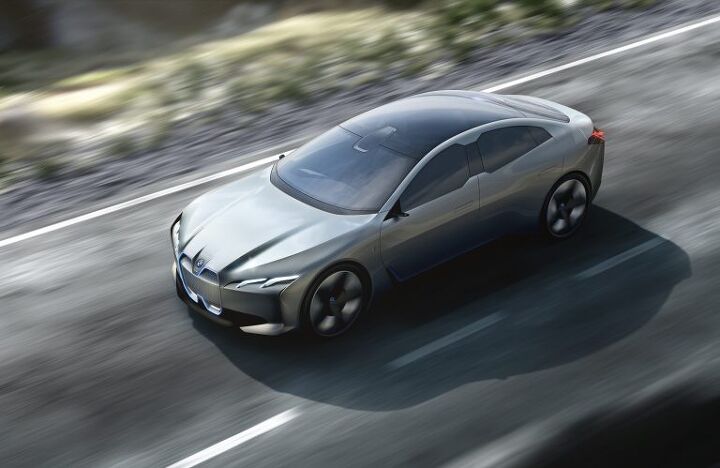No Mass-produced BMW EVs Until 2020; Buyers Couldn't Handle the Cost, CEO Says

Luxury automakers aren’t in the business of losing money, and BMW doesn’t want to take a hit just because futurists claim the era of EVs is now. Until it has fifth-generation electric vehicle technology on hand, the German automaker plans to go easy on EV production, CEO Harald Krüger told analysts on Thursday.
While Bimmer’s long-range plans still call for 25 electrified models by 2025, 12 of them fully electric, Krüger said it would be too costly to hit the production throttle at this time. How much cheaper are the products designed around BMW’s fifth-generation technology? The difference (in percentage) amounts “a two-digit number,” the CEO claimed.
“If you want to win the race, you must be the most cost competitive in the segment, otherwise you cannot scale up the volume,” Krüger said. “We do not want to scale up with the fourth generation.”
Plug-in hybrids aside, the only real EV in Bimmer’s stable is the i3. The plug-in i8 eco-supercar represents the brand’s four-gen battery and electric motor tech, and it’s hardly a mass-market model. Coming next year is an EV version of the Mini Cooper hardtop.
It’s 2020 when BMW hits the gas — or, more specifically, begins leaving gas in the rear-view. That year, the electric iX3 crossover (an X3, minus the ICE and fuel tank) appears, the first of many new i-badged models. In an announcement earlier this week, the automaker said it would invest a further $8.6 billion to help in the roll-out. A flexible platform accommodating all types of propulsion sources makes the plan possible.
Until the new architecture and battery technology arrives, there just isn’t a way for Bimmer to create a mass-market vehicle with a competitive range and a reasonable sticker price — unless the automaker decided to sell it at a great loss.
Another model arriving soon, possibly in 2020, is the i4, an EV modelled after the i Vision Dynamics concept car. Speaking to AutoExpress, Krüger claimed the vehicle — and others like it — would possess a driving range of 340 to 435 miles. That figure is most likely based on the European driving cycle, meaning an EPA-tested range of up to 270 miles.
[Source: Reuters] [Image: BMW Group]

More by Steph Willems
Latest Car Reviews
Read moreLatest Product Reviews
Read moreRecent Comments
- Lou_BC Well, I'd be impressed if this was in a ZR2. LOL
- Lou_BC This is my shocked face 😲 Hope formatting doesn't fook this up LOL
- Lou_BC Junior? Would that be a Beta Romeo?
- Lou_BC Gotta fix that formatting problem. What a pile of bullsh!t. Are longer posts costing TTAC money? FOOK
- Lou_BC 1.Honda: 6,334,825 vehicles potentially affected2.Ford: 6,152,6143.Kia America: 3,110,4474.Chrysler: 2,732,3985.General Motors: 2,021,0336.Nissan North America: 1,804,4437.Mercedes-Benz USA: 478,1738.Volkswagen Group of America: 453,7639.BMW of North America: 340,24910.Daimler Trucks North America: 261,959



































Comments
Join the conversation
JLR bosses will be rubbing their hands as they launch the IPACE, the all electric XJ and ready an electric Range Rover. Guess they think the can make a profit....
First it was 2020. Now it's 2025. Ease your mind, Musk, nobody will be cross-shopping for a while.